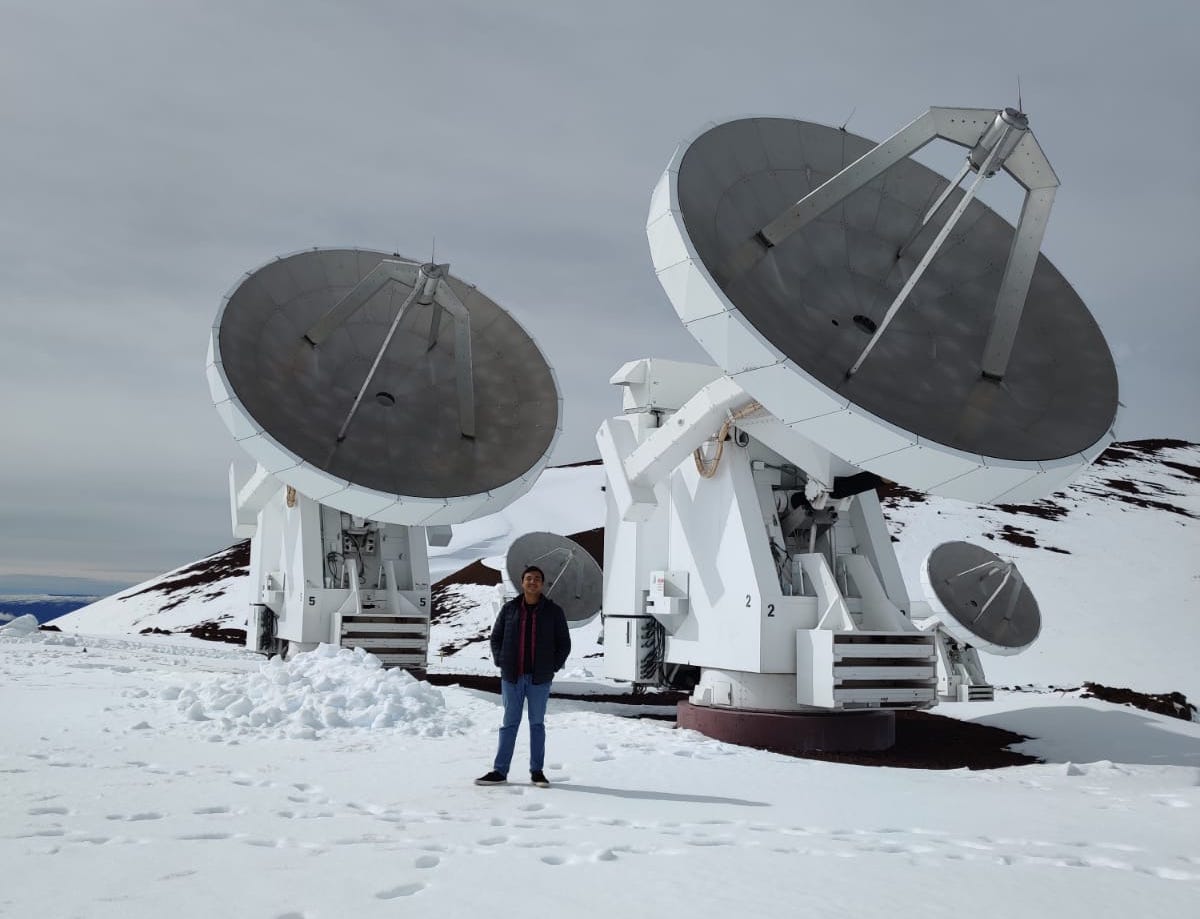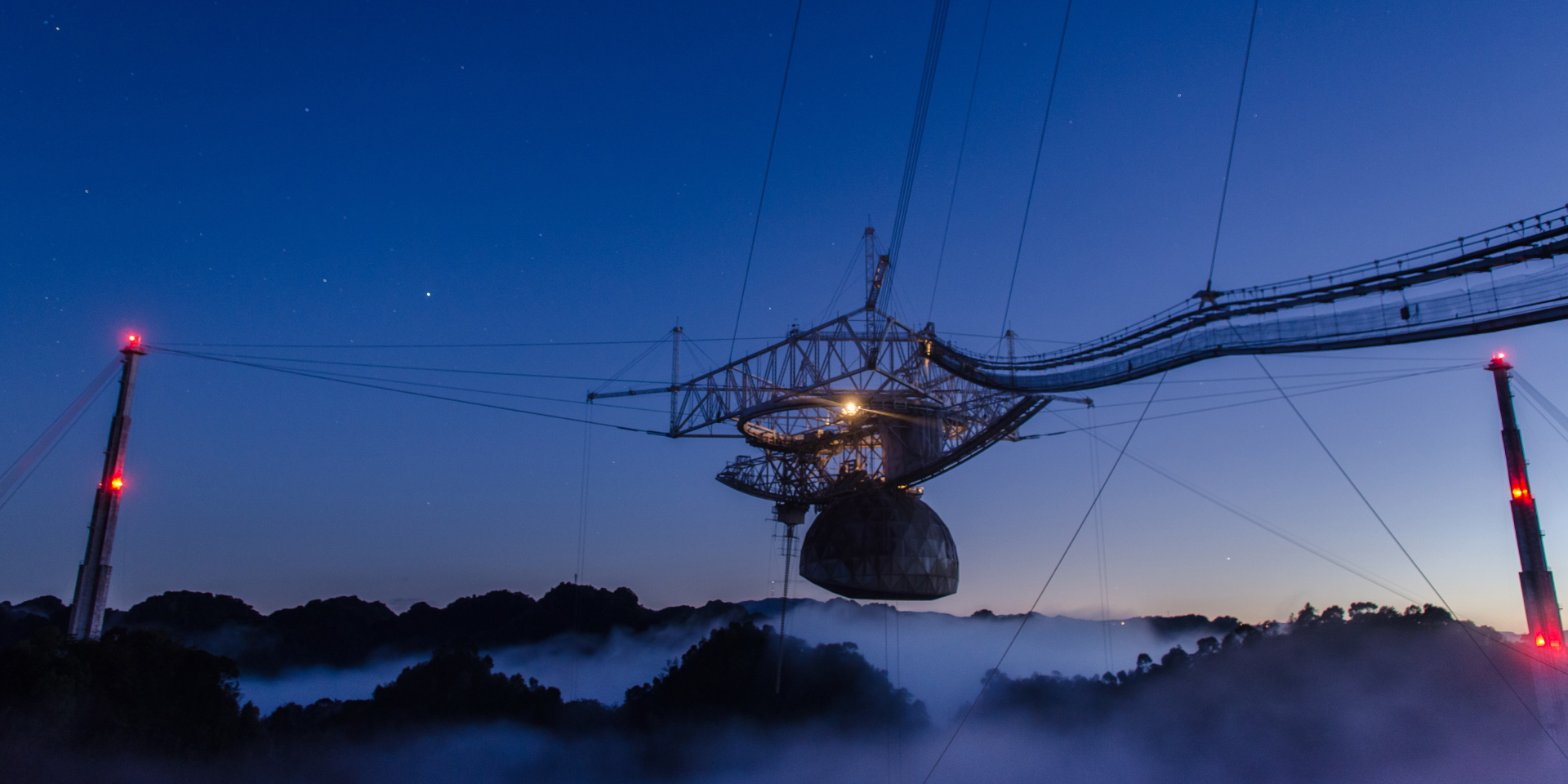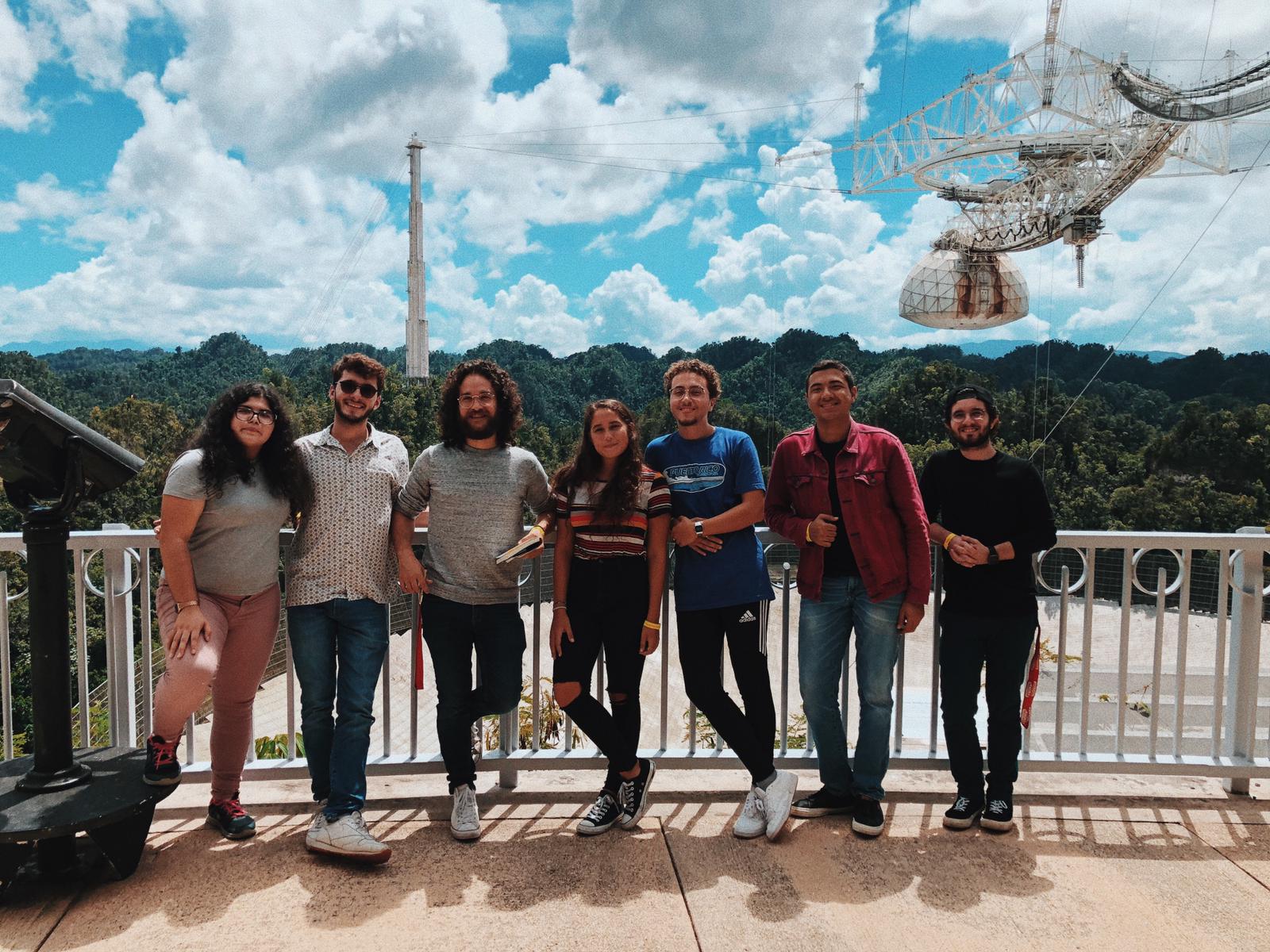About Me

I am a fourth-year graduate student at the Center for Astrophysics | Harvard & Smithsonian, working with the Berger group in radio observations of exoplanet and brown dwarf magnetic fields.
I also work with the Planetary Habitability Laboratory of the University of Puerto Rico at Arecibo studying M-dwarf activity and SETI using Arecibo Observatory data.
Research

Arecibo REDS: The Stellar Activity of Stars with Potentially Habitable Planets
The stellar activity of red dwarf stars is of particular interest due to their potential to host
habitable planets around them. These planets could experience atmospheric erosion and be rendered
inhabitable if subject to frequent flaring activity; this activity is associated with detectable
radio emissions. We exploit the sensitivity of the Arecibo Observatory radio telescope to observe
nearby red dwarf stars with potentially habitable planets and study their flaring activity.
As a member of Arecibo REDS, I plan observing sessions and carry them out on-site, and reduce and
analyze data.
You can read more about it here!
N-body Simulations of a Warm Jupiter Near Resonance with a Sub-Neptune
While very few hot Jupiters are known to have nearby planetary companions, warm
Jupiters with nearby small planets are much more common. Our team found an interesting
case of a warm Jupiter near resonance with an outer sub-Neptune. To further explore the
behavior of this configuration, I am programming dynamical simulations of this system to
test its stability and evolution. So far, I have found that the system can be stable within
the known constraints set by Kepler and radial velocity data, but I rule out many configurations
with high eccentricities (>0.15) or mutual inclinations (>5 degrees).
Check out my presentation below to learn more!
Radio OH Observations of the First Interstellar Comet 2I/Borisov
Comet 2I/Borisov was first observed September 8, 2019 and was quickly identified as originating from
outside the Solar System due to its highly eccentric, hyperbolic orbit. This is the first interstellar
comet to be discovered so far. Radio observations of comets have been successfully performed since 1973,
when comet C/1973 E1 (Kohoutek) was observed in search of the hydroxyl (OH) radical in the comet’s coma;
the OH radical is a photodissociation product of water and can be used to quantify the water production
of the comet. Using the Arecibo Observatory, we observed 2I/Borisov over the course of its passage
through the northern sky, looking for this same OH signal. Though the campaign resulted in a non-detection,
our results are consistent with observations at other wavelengths, and future work includes obtaining
upper limits on water production from our data.
You can read more about it here!
Contact
Email: [email protected]
Mailing Address:
TO: Kevin Ortiz Ceballos
MS-10, Center for Astrophysics | Harvard & Smithsonian
60 Garden St., Cambridge, MA 02138
Secondary Address:
Planetary Habitability Laboratory | phl.upr.edu
University of Puerto Rico at Arecibo
Carr. 653 Km. 0.8 Sector Las Dunas
Arecibo, PR 00613



